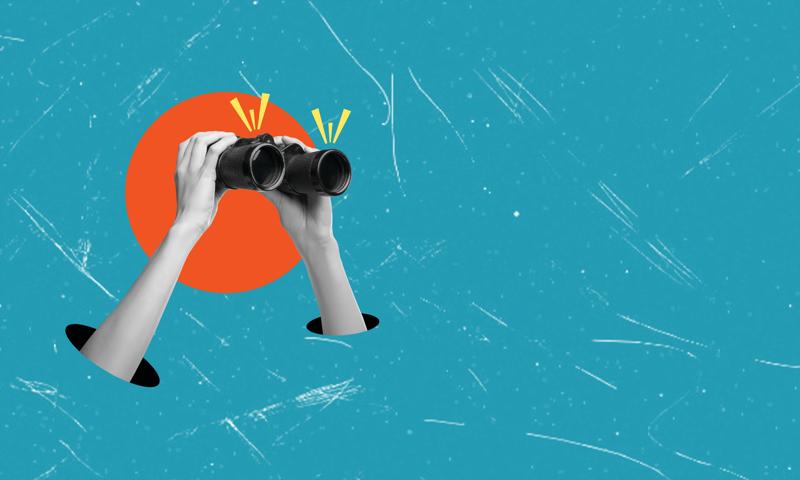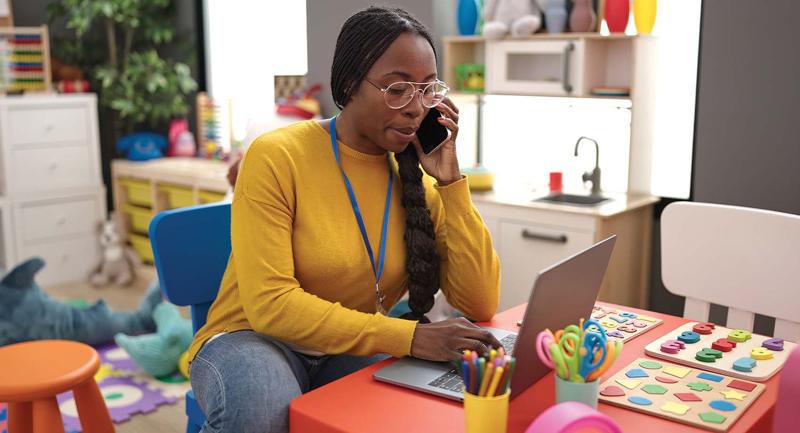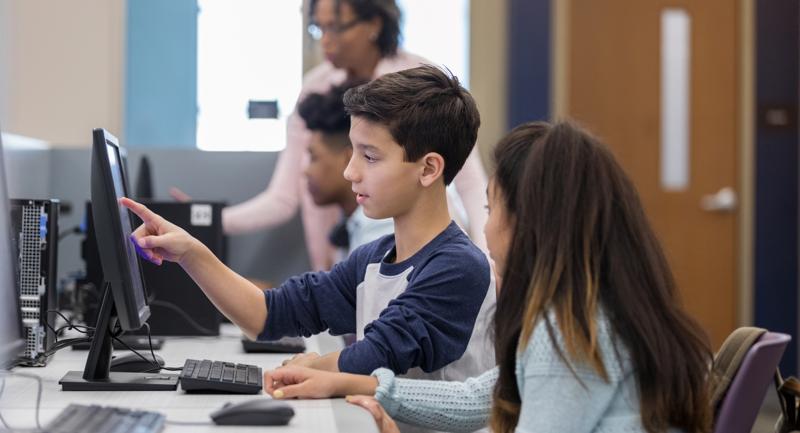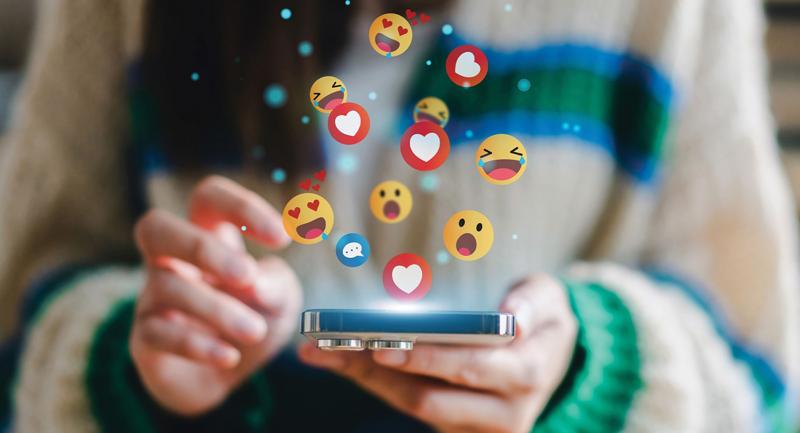Getting kids excited about learning has never been a bigger challenge, nor has it been more important. Exhausted teachers are often caught between the demands of standardized tests, overreaching parents, and students who are dispassionate about school. Exacerbating these challenges are generative AI tools like ChatGPT that make it easier than ever for overloaded and under-interested students to take shortcuts. This leaves teachers and administrators struggling to find ways to maintain academic integrity and provide students with meaningful, equitable assessments.
While there are numerous underlying causes for a lack of engagement that are outside of teachers’ control, it’s productive to reflect on the aspects of teaching and learning that we as educators have within our control.
When I started teaching in 1999, school was an analog-only world. But what worked for me and my colleagues back in the days of “everything on paper” just doesn’t work now.
Caught between the very real demands of social, political, and budgetary challenges—and the rapid pace of technological change—many schools have struggled to adapt. In some cases, it’s become easier and less stressful (Fernández-Batanero, 2021) to go “back to the basics” by doubling down on in-class hand-written essays, worksheets, and quizzes—and banning cell phones in classrooms (Tabachnick, 2024).
But this approach only further erodes the relevance of school and our assignments in the eyes of our students, giving them less reason to show up and more reason to cheat. A recent Gallup poll, for example, found that less than 20 percent of Gen Z K–12 students strongly agree that what they are learning feels important, interesting, or challenging (Hrynowski, 2024).
The challenge, then, is to design assignments and assessments that maintain rigor, align to standards, and cover the same curriculum as traditional assignments, while also providing engaging experiences that meet the needs of our students and keep pace with the demands of a contemporary world. The World Economic Forum’s Top Job Skills of 2025—skills and mindsets in demand by employers—don’t mention memorization or test-taking, but instead include skills like creativity, innovation, resilience and flexibility, critical analysis, and technology use and design (Whiting, 2020).
In my book, Storytelling With Purpose: Digital Projects to Ignite Student Curiosity (ISTE, 2024), I detail how we can use multimedia research projects and digital stories as a rigorous learning model to engage today’s students. This multimodal learning approach doesn’t change what we teach, but rather how students relate to our content, and it offers them additional ways to demonstrate and apply their knowledge. The process fosters critical thinking, provides purpose and meaning for our curriculum, and offers ways for teachers to design uncheatable assessments. Projects like these help us create cultures of learning around human-centered activities rather than data-driven processes. When we teach in this authentic way, we won’t have to ban technology in our classrooms or fear cheating. We will empower our students to be the digital problem solvers expected by colleges and employers, and to develop the skills and mindsets they need to be digitally literate, engaged citizens who are prepared to solve global challenges now and in the future.
When we teach in this authentic way, we won’t have to ban technology in our classrooms or fear cheating.
Of course, multimedia research projects and digital stories aren’t the only way we can spark our students’ curiosity and increase engagement. But they are a good start. Some examples include:
Photography as a way to foster inquiry and analysis
Oral history projects and podcasts as a type of qualitative research method
Digital books like literary magazines or student portfolios to collect multiple learning artifacts and show change over time
Cover art and editorial illustrations for critical thinking and analysis of themes
Social media stories to facilitate media literacy and marketing skills
Video documentaries that combine visual evidence, qualitative research, and writing and speaking skills
Multimedia research projects can supplement curricula, but they can also be an easy and effective replacement for existing assignments to help us facilitate rigorous, meaningful learning experiences that provide a three-dimensional picture of student learning.
Going Back to the Basics
Going back to the basics isn’t about pencil and paper; it’s about process and mindset. Our assignments and class culture can generate the momentum for students to be lifelong learners and critical thinkers. For me, this means focusing on the elements we know are at the heart of good learning.
One of my book chapters focuses on how to use student-created multimedia projects for assessment instead of tests, reports, or presentations. I’ve since expanded that chapter into an online course, in which I share the three elements of cheat-resistant authentic assessment: originality, personal connection, and purpose.
Originality
If an assignment has only one right answer, we’ve set ourselves up for failure in terms of cheating. Tests, quizzes, and to some degree, reports, all have this fatal flaw. This one-right-answer mentality also impedes students’ ability to learn how to find creative solutions to challenges in life that don’t have a single answer.
What if instead of asking every kid to check the same box at the same time, we challenged them to apply the knowledge, skills, and concepts from our curricula in a way that was unique to them? Choices made by students like writing, photography, design, and perhaps even including their own voice or image (think investigative podcasts or video documentaries) ensure that they can’t copy someone else’s work.
If we want students to be independent thinkers, then let’s use projects where students have agency to design learning artifacts that facilitate their ability to show what they know in meaningful ways.
Personal Connection
When we make space for students to investigate an aspect of our curriculum that resonates with them, we encourage them to embrace their curiosity and celebrate learning as an active rather than passive process of discovery. While students have agency throughout assignments, we can ensure that standards and curricular goals are met by setting project boundaries and expectations, and provoking student curiosity through intellectual challenges embedded in the assignments.
A project in my high school cinema class challenged students to produce a public service announcement (PSA) video about climate change. PSAs are a type of visual expository essay that advocates for a positive change of behavior or mindset, such as the importance of voting or understanding the dangers of distracted driving.
As students completed annotated bibliographies in the development phase of the project, I asked them to note surprising or unusual findings, and then reflect on what resonated with them the most from their research. For example, one student’s research revealed that switching to energy efficient light bulbs is an easy way for individuals to have a significant impact on their carbon footprint. While many students created projects with shocking or scary messages, she empathized with her audience and chose an aspect of the topic that she felt wouldn’t overwhelm them, making it more likely that they would take action. She wrote a script around that topic, and her video eventually won a national award.
While this student learned the core concepts of the curriculum (research, writing, cinematography, collaboration, video editing, etc.), she had plenty of freedom to make a personal connection to the work. She had agency over what the multimedia research project would be about, what it looked like, and how she marketed and shared it online.
Purpose
We’ve all been in meetings or worked on assigned tasks that make us wonder, What’s the point? Everyone, including our students, wants to do work that is meaningful and to know that their hard work and effort has a purpose. So, if we want our students to take their work seriously, we need to give them serious work. Student-created multimedia research projects are inherently purposeful because their effort results in a real impact beyond the classroom, and the payoff can often be seen immediately.
If we want our students to take their work seriously, we need to give them serious work.
Instead of the PSA multimedia project on climate change, I could have given a test or assigned a report to cover the same material, but the process of discovering, synthesizing, and presenting ideas in ways that make sense to an audience creates a much stronger connection to the content. Research shows that deeper understanding occurs when we explain—or teach—concepts to others. It transforms the entire learning process into an enjoyable, meaningful experience that students look forward to, even though they have to put in lots of time and hard work. Their learning helps others learn, too.
What Makes Assignments Uncheatable?
The reality is that if a student really wants to cheat, they can. But I’ve found that policing students only creates an antagonistic classroom culture. And cheat detection software, which is flawed (Rathi, 2024) and biased (García Mathewson, 2023), costs districts tens of thousands of dollars every year. We can sidestep the futile Whac-A-Mole of trying to catch kids being “bad” and instead focus our energy on constructive behaviors and mindsets.
To disincentivize cheating before it becomes a problem, teachers can focus on the following.
Intrinsic motivation: As it turns out, effective learning experiences are those that generate excitement, provide purpose, and embrace personal curiosity. A meta-analysis of 344 education and psychological studies found that intrinsic motivation is associated with student success and well-being, whereas extrinsic motivators like rewards and punishments have a negative effect on both (Howard, 2020).
In the example shared, my student who researched energy efficient light bulbs found a topic she was curious about, and because she knew that her project would have a real, tangible impact on many people outside the classroom, there was no incentive for her to cheat. There was intrinsic motivation for her to complete the project with accuracy and on time. In other words, she cared about creating a high-quality product.
Project design: Instead of spending hours coming up with byzantine gimmicks to keep kids from cheating, we can create assignments that are uncheatable by design—authentic assignments that maintain academic rigor and meet the criteria of originality, personal connection, and purpose.
Approach to grading: Assessing and grading multimedia projects can be a fun and constructive process for both students and teachers. Here are some suggestions to make the process productive and meaningful.
Share a checklist of requirements and expectations with students at the start. Make a list for content, such as concepts and vocabulary that must be addressed accurately, and a separate list for storytelling craft such as videography, audio quality, and design aesthetics.
Use a workshop model. Instead of a single deadline for the entire project, have students work on a project in stages, getting feedback along the way. It’s a great way to ensure kids don’t use AI at the midnight-hour to do the work for them.
Triangulate student growth with four dimensions of evaluation: self-evaluation (through oral and written feedback), peer evaluation (from workshops and gallery walks), teacher evaluation, and audience evaluation (from online comments or other interactions).
Intellectually Agile Problem Solvers
In an era of digital tools that accelerate our work, global collaboration that happens at the speed of light, and knowledge and information that are literally at our fingertips, defining academic integrity for ourselves and our students is increasingly difficult. Instead of dwelling on what might be lost in this transition, let’s embrace the many opportunities that multimedia projects provide to help our students become intellectually agile and emotionally resilient problem solvers—and at the same time bring purpose and joy back to learning.









